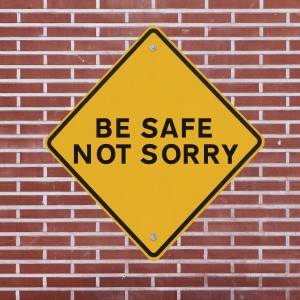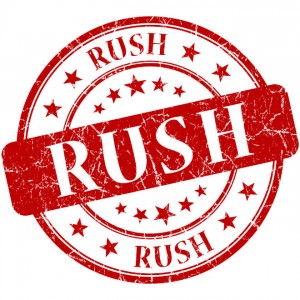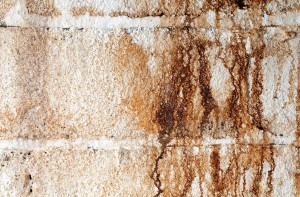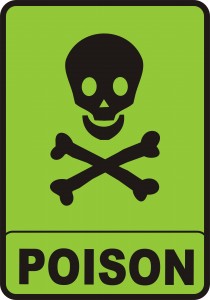
Use only a certified chimney sweep like Jack Pixley Sweeps to work on your chimney system
Fireplaces are an important part of our homes. In addition to serving a decorative or aesthetic purpose, they add value to a house and can serve as a reliable heat source during cold winter months. Despite the importance of proper fireplace and chimney maintenance, many homeowners neglect to complete necessary annual cleanings or attempt to do it themselves.
While DIY projects are a great way to save money on many household projects, cleaning a chimney system is not a project that should be undertaken by the average weekend warrior. By hiring a certified professional, homeowners can guarantee that their chimneys and fireplaces will last for years to come.
Why use a certified chimney sweep?
Just as you would not go to a dentist for a broken leg, it is not recommended to hire a regular renovation company to clean, update, or repair a broken fireplace or chimney. Hiring a certified chimney sweep ensures that the person servicing your chimney system is a trained professional who is up to date with the latest technology, standards, and techniques in the industry.
Most reputable companies will have chimney sweeps certified by the Chimney Safety Institute of America, or CSIA. With over 1,400 CSIA certified chimney sweeps in North America, it is easy to locate one of these highly trained professionals to service your chimney system. The technicians from Jack Pixley Sweeps are certified by both the CSIA and the National Chimney Sweep Guild.
What can I expect from a certified chimney sweep?
CSIA certified chimney sweeps are held to a higher level of knowledge and professionalism than others working in the industry. Because of this, you can expect your chimney sweep to be knowledgeable about the most recent advancements in chimney, fireplace, and venting safety along with the local building codes and manufacturer’s instructions for newly installed appliances.
Certified chimney sweeps should also act in a professional manner, including taking the time to explain how the cleaning process works, answering any questions you may have, and ensuring that furniture, carpets, and any other home décor is properly protected before beginning. Sweeps will evaluate both the interior and exterior of your chimney system, employing tools like the traditional chimney brush along with more modern technology such as vacuums, cameras, and other electronics.
Why is an annual inspection important?
An annual chimney inspection or cleaning is a chore that many homeowners tend to put off or ignore. Because of this, many small problems that could be easily and inexpensively fixed are not found until they become much bigger, more expensive, and more labor intensive problems.
“A chimney inspection is like an annual dental check-up,” says Ashley Eldridge, Director of Education for the CSIA. “It’s preventative maintenance that helps minimize potential hazards.” Additionally, the National Fire Protection Association Standard 211 says, “Chimneys, fireplaces, and vents shall be inspected at least once a year for soundness, freedom from deposits, and correct clearances. Cleaning, maintenance, and repairs shall be done if necessary.”
A certified chimney sweep will be able to not only clean and maintain your fireplace system, but will also be able to identify any areas in need of repair or those that many deteriorate in the future. Sweeps are also able to diagnose the causes behind common issues such as drafty chimneys, water leakage, or animal entry.
After a winter of heavy use, most homeowners let their fireplaces fade into the background during the warm months of summer. For many, removing the remaining ashes, cleaning any stains, and wiping away soot leaves the fireplace ready for another season of use. However, fireplaces and chimneys should be swept by a professional annually to prevent any potentially hazardous buildup from becoming a far more dangerous issue down the road.
How often should my chimney be cleaned?
The CSIA, or Chimney Safety Institute of America, advises that chimneys be swept any time there is a sooty buildup in excess of 1/8th of an inch inside a flue or fireplace. As determining the amount of buildup can be difficult for the average homeowner, the CSIA recommends that they should “be inspected at least once a year for soundness, freedom from deposits, and correct clearances” by a certified chimney professional.
What time of year is recommended for a cleaning?

If it involves a chimney or fireplace, you can count on Jack Pixley Sweeps to know how to install it, repair it, clean it, and/or bring it up to code and national safety standards.
Although many homeowners wait until the weather cools off to schedule a chimney sweep appointment, it is important to have your system inspected before it is used for the first time each fall. Scheduling an appointment during the warm summer months not only guarantees that a system is in working condition when the weather begins to cool off, but also ensures that homeowners beat the fall rush and can schedule an appointment at their convenience.
Why are chimney inspections important?
Having a professional inspect and clean your chimney each year is an essential aspect of home maintenance. Unlike an average homeowner – or even a handyman – chimney sweeps are professionally trained to look for imperfections, flaws, and/or cracks that may not be visible to the untrained eye. While all systems should be inspected annually, inspections are especially important in homes that have recently had any upgrades or changes to their fireplace systems, such as converting to gas logs or the addition of a fireplace insert.
If you have recently purchased a new home, it is recommended that you have a cleaning done in the summer or fall, despite the timeline given by the previous homeowners, as this allows you to establish a relationship with a chimney sweep company, as well as informs you of the exact condition of your fireplace, flue, and chimney components. In some cases, it may be possible to work with the same company as the previous homeowners.
Scheduling an annual appointment with the same provider allows someone to become acquainted with the condition of your particular system who can then check on it over time to monitor its progress. This familiarity ensures that any changes such as cracks or blockages are quickly detected and mended, preventing the need for emergency maintenance or costly major repairs. Likewise, staying with the same provider over a period of time often means you do not have to schedule an appointment each year; traditionally, companies send out reminders to their repeat customers to let them know that they are due for an annual inspection.

Chimney mold can cause serious respiratory problems as well as other health concerns. Watching for telltale signs of a chimney leak can help you prevent mold from happening.
Do you know why molds are growing in your chimney? Are you curious as to why it poses a risk to your health and your home? We from Jack Pixley Sweeps would like to give you an overview based on the EPA guide on what mold really is and how it can affect your home.
General Description
When water leaks into your chimney, it creates a lot of problems involving the structure of your chimney and your house in general, and more importantly, your health. One very common result of water inside the chimney is the growth of mold. Usually, molds need moisture to reproduce and thrive. You can find mold spores on leaf debris as well as the damp environment of your chimney. They come in all sorts of colors like green, brown and black. It can have a distinct dank smell to it, too.
The most common cause of mold is water but they can come from different areas and situations, too. When there is water in damp areas, it should be cleaned within 24-48 hours to prevent creating the perfect environment for mold to flourish in.
How can you tell if you have been affected by mold?
You will know when mold is already starting to invade your homes when you notice you or any of the members of your family manifesting these things:
- Allergic reactions
- Nasal congestion
- Headache
- Cough and colds
- Eye irritation
- Infections in the throat or skin
If you see or feel any of the above mentioned symptoms, consult your doctor and have it treated as soon as possible. Don’t wait for your condition to become more serious.
How to prevent mold from forming?
One of many tips our CSIA-certified professionals will give you is to have your chimney inspected and cleaned annually. If you have a dehumidifier then this will make our job a lot easier because you can control the humidity inside the home and in areas prone to mold growth. Also, if you don’t have one yet, consider having a chimney cap installed to prevent water from coming in. You also need to waterproof your chimney with a waterproofing sealant and make sure your flue liner is intact.
The most important thing to do to prevent mold growth is ensuring that your chimney is properly cared for and maintained. Give us a call and we can tell you more about mold and how we can get rid of it. We guarantee that our services are worth your time and money. We have been serving almost 100,000 satisfied customers in the greater Minneapolis area for 35 years now. Our name is definitely something you can trust!
Choosing the right company to handle all of your chimney and fireplace needs can be a tough task. Knowing which questions to ask can and will certainly smooth out the process for you.

Being an informed homeowner will make the process of selecting a chimney sweep a much simpler one.
Creosote Is Dirty And Dangerous
Most of the time, when chimney professionals like Jack Pixley Sweeps bring up the subject of creosote, we’re talking about fire safety. And there’s a good reason for that: Excessive creosote buildup — particularly if those creosote deposits develop into second or third stage creosote — can lead to a serious fire hazard.
But that’s not the only reason creosote buildup is dangerous, and why regular chimney sweeping is an important part of safer chimney use. Creosote itself — and the various chemicals that make it up — has been shown to be toxic.

Creosote exposure can cause skin irritations, as well as breathing difficulties.
Creosote Development
Several different materials get dubbed creosote, including the dark liquid used to treat commercial lumber materials like railroad ties. The creosote we’re talking about is a chemical deposit that results from burning wood in a heating appliance. Gases rise in the chimney connected to that appliance as the wood burns, and the cooler flue causes condensation, resulting in creosote build-up.
The coal tar creosote used in wood treatment and the creosote in your flue do have something important in common, other than their descriptor: People should avoid prolonged direct exposure to either, because both can be dangerous.
Short-term and prolonged exposure to the chemicals in creosote has been shown to result in an array of health issues, from skin and respiratory irritation to stomach pains and a potential worsening of asthma symptoms, according the Agency for Toxic Substances and Disease Registry.
Limiting Creosote Exposure
Exposure to chimney creosote can happen in different ways. Airborne particles can be breathed in. Chemicals can be absorbed through the skin or — a particular concern with kids — orally, if fingers that came into contact with creosote were absent-mindedly put in your mouth.
Limiting exposure to creosote starts with limiting the development of creosote to begin with, by burning the right materials. Burning green or wetter wood leads to a cooler fire and more creosote — and burning anything else, like trash, can contribute to creosote build-up and give off toxic chemicals, depending on the material.
Sticking to burning kiln-dried or seasoned cordwood only is your best bet. It provides the best, cleanest burn, and is smarter to use both short and long term.
The other key step is having a professional chimney technician clean your flue regularly. During a chimney sweeping appointment, Jack Pixley Sweeps technicians will remove creosote deposits from your flue, using specially designed tools and vacuums to make sure the mess is completely confined and removed. Our technicians are trained to safely handle and safely dispose of creosote, so you don’t have to come into contact with it.
If you want to know more about creosote — and limiting and removing it from your chimney system — give Jack Pixley Sweeps a call. We’re always happy to help our clients!





